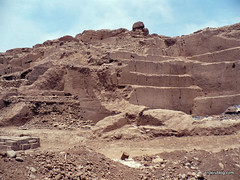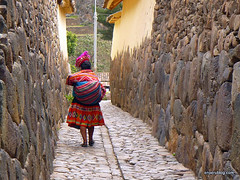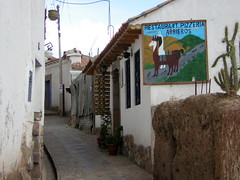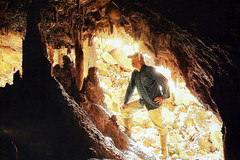At 12 hours from the Peruvian capital Lima, Caravelí, in the Arequipan province of the same name, was lucky to survive and keep – thanks to its relative isolation – its splendid bodegas of wines and piscos. Other towns in the south weren’t so lucky and were pillaged and burnt to the ground by Chilean troops in the War of the Pacific. This year the town presented itself in the national pisco contest that took place in Lima and took first place for its exemplary pisco of black creole grape, called El Comendador.
Category: "Travel and Places"
Huacas of Manchay Alto
There’s not much left of it now, but there is something special about this temple complex in the Lurín valley that makes it so interesting. At about 3000 years old, it makes the city of Pachacamac just to the southwest look positively modern.
Air accident in San Diego reminds us of Alfredo Salazar
In 1937 Alfredo Salazar managed to crash his damaged plane in an unpopulated area of Miraflores.
Just a few days ago a horrible accident occured in San Diego, United States, when a US F-18 fighter jet plummeted into a residential zone, destroying homes and killing four people including two children. The pilot had ejected seconds before.
A similar tragedy almost occured in Peru 71 years ago. A plane completely in flames was heading was falling rapidly over the skies of Lima, heading towards Miraflores – then only a sea-side town found at the end of Av. Arequipa.
Wari city unveiled in Cerro Pátapo – missing link discovered
In less than two weeks since work began, amazing discoveries have been made at the Cerro Pátapo archaeological site, until now little more than a pile of rocks. This huge site that stretches over 5km is now revealing its importance – it is a missing link between the declining Moche culture and the newly arrived Wari.
Photographing Lima’s colonial centre
I recently spent a day walking around the old centre of Lima, once one of the most important and wealthiest cities in the Spanish Empire and the entire world. Its prestige has faded quite a bit, thanks to suffocating internal migration in the 50’s and ex- turned- current President Alan García’s reign of economic destruction and devastation in the 80’s.
These were the results..
Peruvians spend 19% more, credit easier to come by [Featured]
Rachel Gamarra explains that while the world’s economies fall into recession, Peru’s is racing ahead as Peruvians increased their spending by a huge 19% in 2008. With the country’s economy only growing at about 9% and wages remaining stable, where is this money coming from?
Sandboarding and buggy-riding in Huacachina
To one side of the southern regional capital of Ica, and the fertile valley it sits in, is a huge expanse of sand that stretches out for miles in the direction of the coast. Completely barren and devoid of moisture, the winds shift the sands as they have for centuries forming huge dunes that bask and bake in the strong sun. Bleached white with light during the day, and taking on deep warm tones as the sun sets, the dunes hide among them small oases of tiny lakes and palm trees. But there’s no time to sit, stare and take in this scene of exquisite natural beauty, yet another of millions to be found across Peru. It’s time to sandboard!
Loosing weight in Peru [Featured]
Rachel Gamarra explains how Peru’s abundance of fresh, unprocessed, nourishing, tasty and cheap food can help keep you slim, and tells of her first experience in a Peruvian supermarket and how it compares to one in her home country, the super-sized United States.
World’s Biggest Ceviche
As the birthplace of ceviche, Peru just couldn’t stand by and let another Latin American country hold the Guinness World Record for the largest dish ever made.
Some Nazca Lines aircraft over 50 years old
The amazing shapes and lines drawn on the plains of Nasca have led to a growth in passenger numbers at the Maria Reiche aerodrome of some 110% in the past 10 years. This however has not gone hand in hand with proper renovation of the terminal’s aircraft.
Maria Reiche
…Tirelessly, she spent day after day of her life under the hot sun cleaning rocks from lines, and working on her theories as to what they were for. She for one came to the conclusion that the lines were some kind of calendar, marking solstices and the passage of stars and constellations…
Colonial cannon discovered beneath Lima’s streets
A cannon dating from Peru’s Spanish colonial period has been found by workers constructing part of Lima’s new Metropolitan transport system and underground central station. Unearthed at the intersection between Camaná and Emancipation, the cannon measures 2.79 metres long and is in good condition.
An archaeologist from the country’s National Institute of Culture (INC), Carmen Gabe Benaki, explains that the cannon was likely to have been reused in the 1800s to protect an old mansion that once occupied the site but no longer stands. During the building’s demolition it would have been left in place and become buried.









![Food business taking off in Peru [Featured]](http://farm3.static.flickr.com/2461/3616418081_a058a9f62e_m.jpg)
